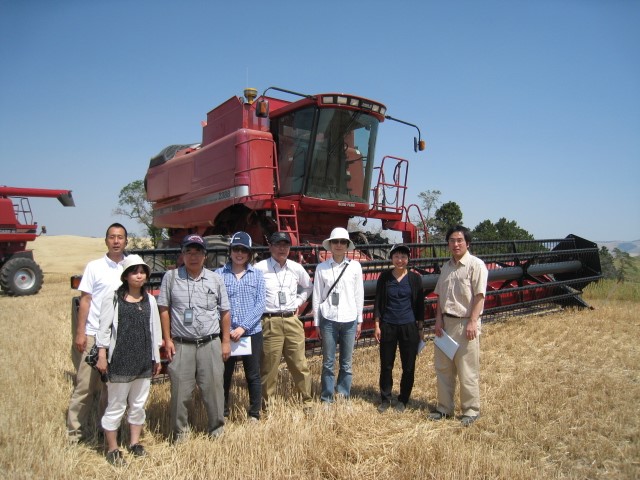Using Market Access Funds (MAP), the Council’s food barley promotion programs in Japan led to over 2,000 metric tons, valued at $1 million, of high beta-glucan barley exports from the U.S. to Japan in 2014. The Council invested $63,000 of MAP funds in 2014 to promote the US food barley to the Japanese food industry, as a result, exports sales of US food barley totaled $1 million generating a Return on Investment (ROI) of $14.87 per $1 of MAP funding invested.
The Council began promoting U.S. high beta-glucan barley in Japan as a heart-healthy grain for the last 10 years. As a result of the Council’s promotion, high beta-glucan barley is now known as mochi-mugi (sticky barley or waxy barley) by the Japanese barley industry. The Council’s promotion efforts led to the formation of an industry consortium for the renaissance of barley, a traditional Japanese cereal, as a healthy grain.
A large Japanese barley miller, Hakubaku is the leading importer of U.S. high beta-glucan barley for use in barley cereal and Udon noodle products. In 2014, Harubaku attended a Council-sponsored barley promotion team to the U.S., which included participation in a short course on procurement and characteristics of high beta-glucan barley at Northern Crops Institute. The team also visited major barley producing states North Dakota, Washington and Idaho to meet with key U.S. grower and trade industry representatives and gain updated information on barley production, supply and demand.
Food barley is a relatively new product in Japan, however Japan’s large population (127 million) is very interested in improving their diets and the heart healthy claim on dietary fiber in barley as a means to reduce the Glycemic Index makes U.S. high beta-glucan barley very attractive to the Japanese consumer. The US Grains Council estimates that this market, if fully developed, could consume over 20,000 metric tons of high beta-glucan barley per year valued at over $10 million per year.
About The U.S. Grains Council
The U.S. Grains Council develops export markets for U.S. barley, corn, sorghum and related products including distiller’s dried grains with solubles (DDGS) and ethanol. With full-time presence in 28 locations, the Council operates programs in more than 50 countries and the European Union. The Council believes exports are vital to global economic development and to U.S. agriculture’s profitability. Detailed information about the Council and its programs is online at www.grains.org.

